Ultra-wideband radar: yesterday or tomorrow?
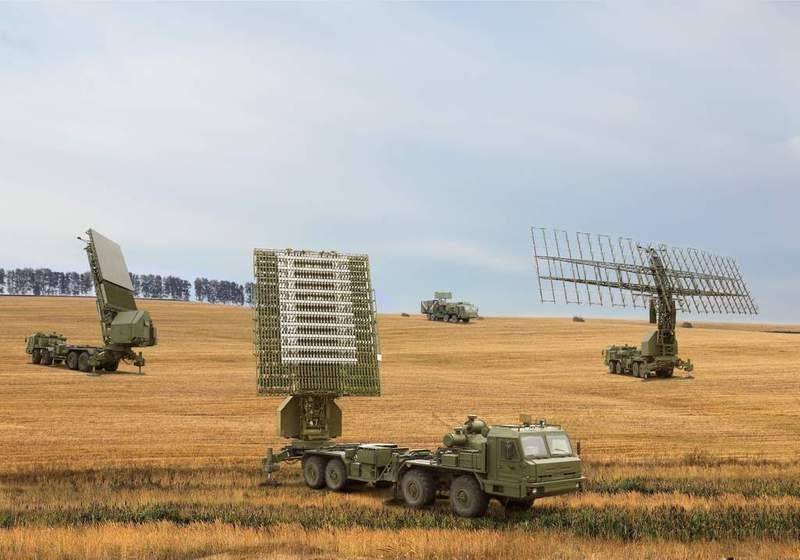
Modern local conflicts, even in countries of the lowest level of development of the armed forces (Syria, Ukraine), show how important the role of electronic reconnaissance and detection equipment is. And what advantages can a party receive, using, for example, counter-battery systems against a party that does not have such systems.
Currently, the development of all radio-electronic systems is going in two directions: on the one hand, to maximize their control and communication systems, intelligence collection systems, high-precision control systems weapons in conjunction with all the previously listed systems and complexes.
The second line is the development of systems that can make it as high quality as possible to hinder the operation of all of the above means from the enemy with the simplest goal of not allowing the enemy to inflict damage and harm on his troops.
It is also worth noting the work on the possibilities and methods of masking objects by reducing their radar signature through the use of the latest radio-absorbing materials and coatings with variable reflective properties.
It is probably worth translating: we will not be able to make the tank invisible in the radio spectrum, but we can minimize its visibility as much as possible, for example, by covering it with materials that will give such a distorted signal that identification will be very difficult.
And yes, we still proceed from the fact that absolutely invisible aircraft, ships and tanks it just doesn't happen. For now, at least. If subtle and hard to see targets.
But, as they say, each target has its own radar. A question of signal frequency and strength. But this is where the problem lies.
New materials, especially radio-absorbing coatings, new forms of calculating reflective surfaces, all this makes the background contrast levels of protected objects minimal. That is, the level of difference between the electrical properties of the control object or defects in it from the properties of the environment becomes difficult to distinguish, the object actually merges with the environment, which makes its detection problematic.
In our time, the minimum levels of background contrast are actually close to the extreme values. Hence, it is clear that for radars (especially for a circular view), which work precisely on contrast, it is simply necessary to provide an increase, first of all, in the quality of the information received. And it is not entirely possible to do this through the usual increase in the amount of information.
More precisely, it is possible to increase the efficiency / quality of radar reconnaissance, the only question is at what cost.
If you take a hypothetical radar, no matter what its purpose, just a circular radar with a range of, for example, 300 km (like "Sky-SV") and set the task of doubling its range, then you will have to solve very difficult tasks. I will not give here the calculation formulas, this is physics of the purest water, not secret.
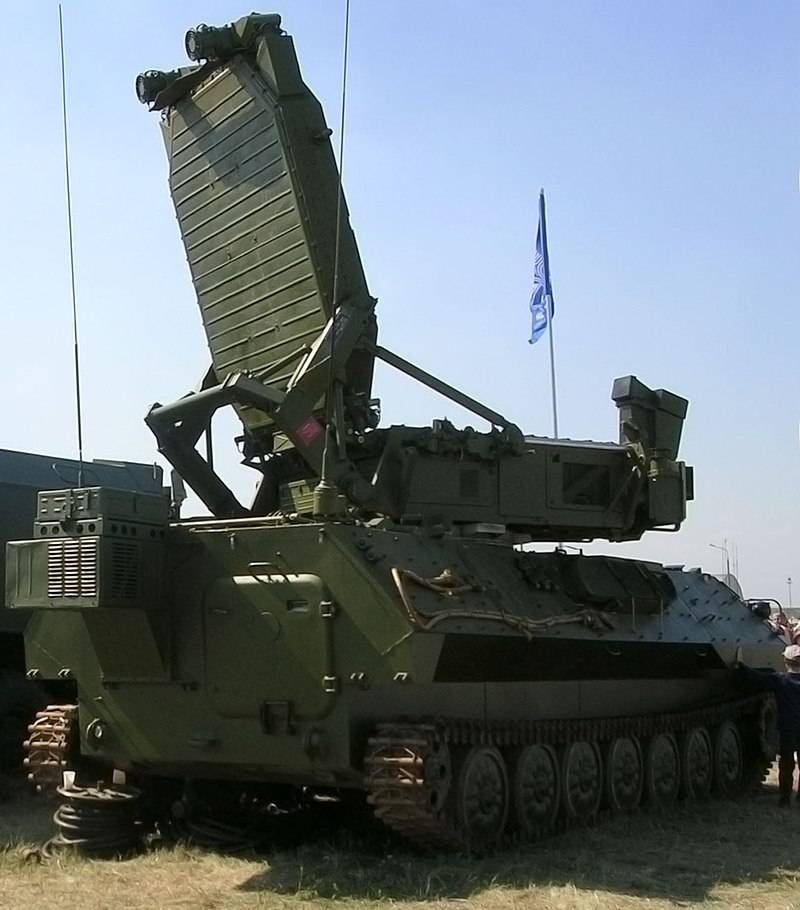
So, to double the radar detection range, you need:
- to increase the radiation energy by 10-12 times. But physics again has not been canceled, the radiation can be increased so much only by increasing the consumed energy. And this entails the appearance of additional equipment for the generation of electricity in the station. And then there are all sorts of problems with the same disguise.
- increase the sensitivity of the receiving device 16 times. Less expensive. But is it realizable at all? This is already a question for technology and development. But the more sensitive the receiver, the more problems with natural interference that inevitably arise during operation. Interference from the enemy's electronic warfare is worth talking about separately.
- to increase the linear size of the antenna by 4 times. The easiest, but also adds complexity. More difficult to transport, more noticeable ...
Although, we honestly admit that the more powerful the radar is, the easier it is to detect, classify, generate for it a personally calculated interference with the most rational characteristics, and send it. And the increase in the size of the radar antenna plays into the hands of those who must detect it in time.
In principle, such a vicious circle turns out. Where developers have to balance on the edge of a knife, taking into account dozens, if not hundreds of nuances.
Our potential opponents from across the ocean are as concerned about this problem as we are. There is in the structure of the US Department of Defense such a department as DARPA - Defense Advanced Research Project Agency, which is engaged in just promising research. Recently, DARPA specialists have focused their efforts on the development of radars that use ultra-wideband signals (UWB).
What is UWB? These are ultra-short pulses, with a duration of a nanosecond or less, with a spectrum width of at least 500 MHz, that is, much more than that of a conventional radar. The power of the emitted signal according to the Fourier transforms (naturally, not Charles, a utopian who is passed through stories at school, and Jean Baptiste Joseph Fourier, the creator of the Fourier series, after whom the principles of signal transformation were named) is distributed over the entire width of the spectrum used. This leads to a decrease in the radiation power in a separate part of the spectrum.
It is much more difficult to detect a radar operating on UWB during operation than an ordinary one precisely because of this: it is as if not one powerful beam-signal works, but as if many weaker ones, deployed in a kind of brush. Yes, experts will forgive me for such a simplification, but this is solely for the "transfer" to a simpler level of perception.
That is, the radar “shoots” not with one pulse, but with the so-called “burst of ultrashort signals”. This provides additional benefits, which will be discussed below.
The processing of the UWB signal, in contrast to narrowband, is based on the principles of detectorless reception, so that the number of bursts in the signal is not limited at all. Accordingly, there is practically no limitation on the signal bandwidth.
Here a long-standing question arises: what does all this physics give, what are the advantages?
Naturally, they are. Radars based on UWB are being developed and developed precisely because the UWB signal allows much more than a conventional signal.
Radars based on UWB signal have the best detection, recognition, positioning and tracking capabilities of objects. This is especially true of objects that are equipped with anti-radar camouflage and radar signature reduction.
That is, the UWB signal does not care whether the observed object belongs to the so-called "stealth objects" or not. Covers against the radar also become conditional, since they are not able to reflect / absorb the entire signal, some part of the packet will "catch" the object.
Radars on UWB better identify targets, both single and group. The linear dimensions of the targets are determined more precisely. It is easier for them to work with small-sized targets capable of flying at low and ultra-low altitudes, that is, UAVs. These radars will have significantly higher noise immunity.
Separately, it is believed that UWB will allow better recognition of false targets. This is a very useful option when working, for example, with warheads of intercontinental ballistic missiles.
But do not get hung up on air surveillance radars, there are other options for using radars on UWB, no less, and possibly even more effective.
It may seem that ultra-wideband signal is a panacea for everything. From drones, from stealth aircraft and ships, from cruise missiles.
In fact, of course not. UWB technology has some obvious disadvantages, but there are also enough advantages.
The strength of the UWB radar is the higher accuracy and speed of target detection and recognition, determination of coordinates due to the fact that the operation of the radar is based on multiple frequencies of the operating range.
Here the “zest” of UWB is generally hidden. And it lies precisely in the fact that the operating range of such a radar has many frequencies. And this wide range allows you to select those sub-ranges at the frequencies of which the reflective abilities of the objects of observation are manifested as well as possible. Or - as an option - this can negate, for example, anti-radar coatings, which also cannot work in the entire frequency range due to the fact that coatings for aircraft have weight restrictions.
Yes, today the means of reducing radar signature are used very widely, but the key word here is “reduction”. Not a single coating, not a single cunning form of the hull can protect against radar. Reduce visibility, give a chance - yes. No more. The tales of stealth planes were debunked in Yugoslavia in the last century.
The calculation of the UWB radar will be able to pick (and, quickly, based on similar data) that sub-frequency package that will most clearly "highlight" the object of observation in all its glory. Here we will not be talking about watches, modern digital technology makes it possible to manage in minutes.
And, of course, analysis. Such a radar should have a good analytical complex that will allow processing the data obtained from the irradiation of an object at a variety of frequencies and comparing them with the reference values in the database. Compare with them and give the final result, what kind of object came into the radar field of view.
The fact that the object will be irradiated at a multitude of frequencies will play a positive role in reducing the recognition error, and there is less likelihood of disruption of observation or counteraction by means of the object.
An increase in the noise immunity of such radars is achieved by detecting and selecting radiation that can interfere with the precise operation of the radar. And, accordingly, the restructuring of the receiving complexes to other frequencies to ensure the minimum impact of interference.
Everything is very beautiful. Of course, there are also disadvantages. For example, the mass and dimensions of such a radar significantly exceed conventional stations. This still greatly complicates the development of UWB radars. About the same as the price. She is more than transcendental for prototypes.
However, the developers of such systems are very optimistic about the future. On the one hand, when a product begins to be mass-produced, it always reduces the cost. And in terms of mass, engineers are counting on electronic components based on gallium nitride that can significantly reduce both the weight and size of such radars.
And, for sure it will happen. For each of the directions. And as a result, the output will be a radar with powerful, ultra-short pulses in a wide frequency range, with a high repetition rate. And - very important - high-speed digital data processing, capable of "digesting" large amounts of information received from receivers.
Yes, we really need Technologies with a capital letter here. Avalanche transistors, charge storage diodes, gallium nitride semiconductors. Avalanche transistors are generally not underestimated devices, they are devices that will still show themselves. In the light of modern technologies, the future belongs to them.
Radars using ultrashort nanosecond pulses will have the following advantages over conventional radars:
- the ability to penetrate obstacles and reflect from targets located outside the line of sight. For example, it can be used to detect people and equipment behind an obstacle or in the ground;
- high secrecy due to the low spectral density of the UWB signal;
- the accuracy of determining the distance up to several centimeters due to the small spatial extent of the signal;
- the ability to instantly recognize and classify targets by the reflected signal and high target detail;
- increasing efficiency in terms of protection against all types of passive interference caused by natural phenomena: fog, rain, snow;
And these are far from all the advantages that a UWB radar can have in comparison with a conventional radar. There are moments that only specialists and people who are well versed in these matters can appreciate.
These properties make UWB radar promising, but there are a number of problems that are being addressed by research and development.
Now it's worth talking about the disadvantages.
In addition to cost and size, UWB radar is inferior to conventional narrowband radar. And significantly inferior. A conventional radar with a pulse power of 0,5 GW is capable of detecting a target at a distance of 550 km, then a UWB radar at 260 km. With a pulse power of 1 GW, a narrow-band radar detects a target at a distance of 655 km, an UWB radar at a distance of 310 km. As you can see, almost doubled.
But there is another problem. This is the unpredictability of the reflected signal shape. Narrowband radar operates as a sinusoidal signal that does not change as it travels through space. Amplitude and phase change, but change predictably and in accordance with the laws of physics. The UWB signal changes both in the spectrum, in its frequency domain, and in time.
Today, the recognized leaders in the development of UWB radars are the United States, Germany and Israel.
In the United States, the army already has a portable mine detector AN / PSS-14 for detecting various kinds of mines and other metal objects in the soil.
This mine detector is also offered by the States to its NATO allies. AN / PSS-14 allows you to see and examine in detail objects through obstacles and the ground.
The Germans are working on a project for a UWB Ka-band "Pamir" radar with a signal bandwidth of 8 GHz.
The Israelis have created on the principles of UWB "stenovisor", a compact device "Haver-400", capable of "looking" through walls or the ground.
The device was created for counter-terrorist units. This is generally a separate type of UWB radar, implemented by the Israelis very beautifully. The device is really capable of studying the operational-tactical situation through a variety of obstacles.
And further development, "Haver-800", which is distinguished by the presence of several separate radars with antennas, allows not only to study the space behind the obstacle, but also to form a three-dimensional picture.
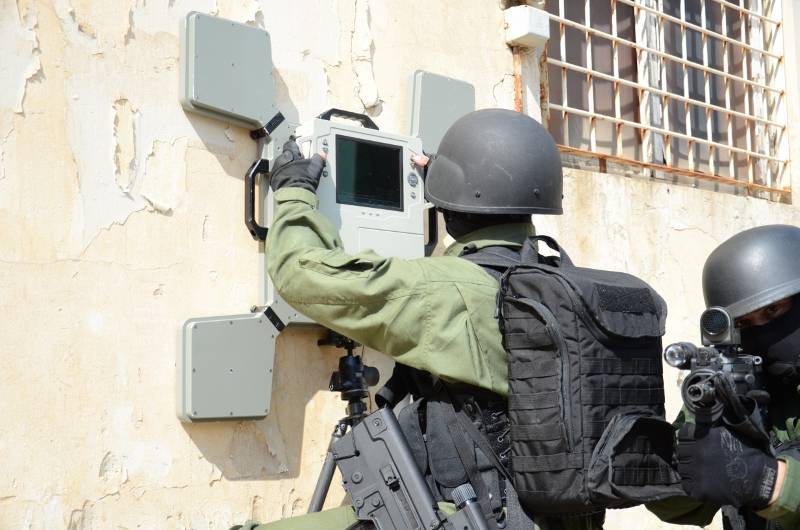
Summing up, I would like to say that the development of UWB radars in various directions (land, sea, air defense) will allow those countries that can master the technology for the design and production of such systems to significantly enhance their intelligence capabilities.
After all, the number of captured, correctly identified and taken for escort with the subsequent destruction of targets is a guarantee of victory in any confrontation.
And if we consider that UWB radars are less susceptible to interference of various properties ...
The use of UWB signals will significantly increase the efficiency of detecting and tracking aerodynamic and ballistic objects when monitoring airspace, viewing and mapping the earth's surface. UWB radar can solve many problems of flight and landing of aircraft.
UWB radar is a real opportunity to look into tomorrow. It is not for nothing that the West is so closely engaged in developments in this direction.
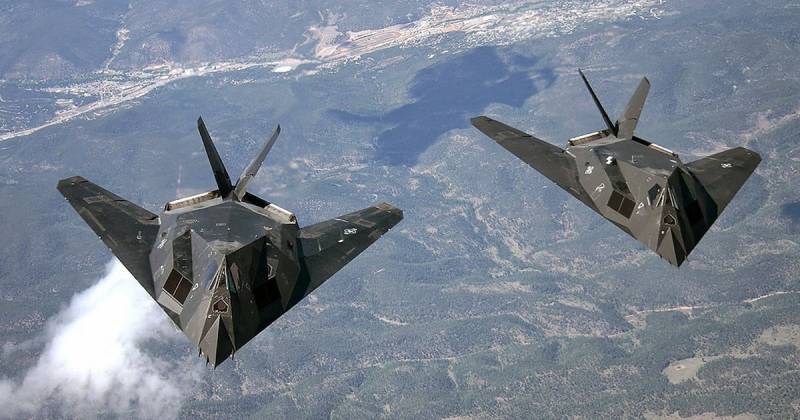
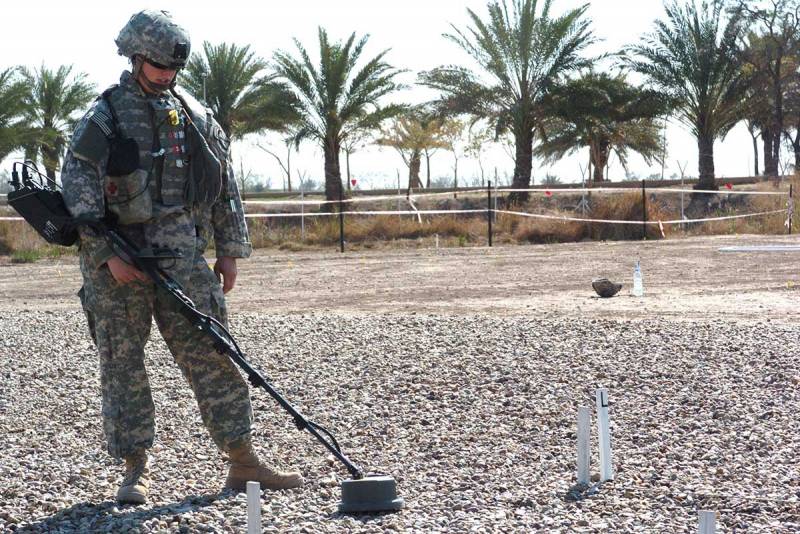
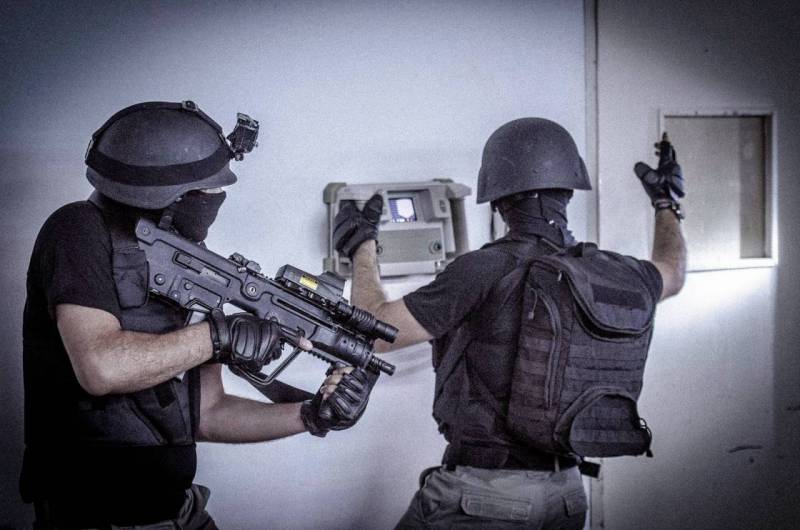
Information